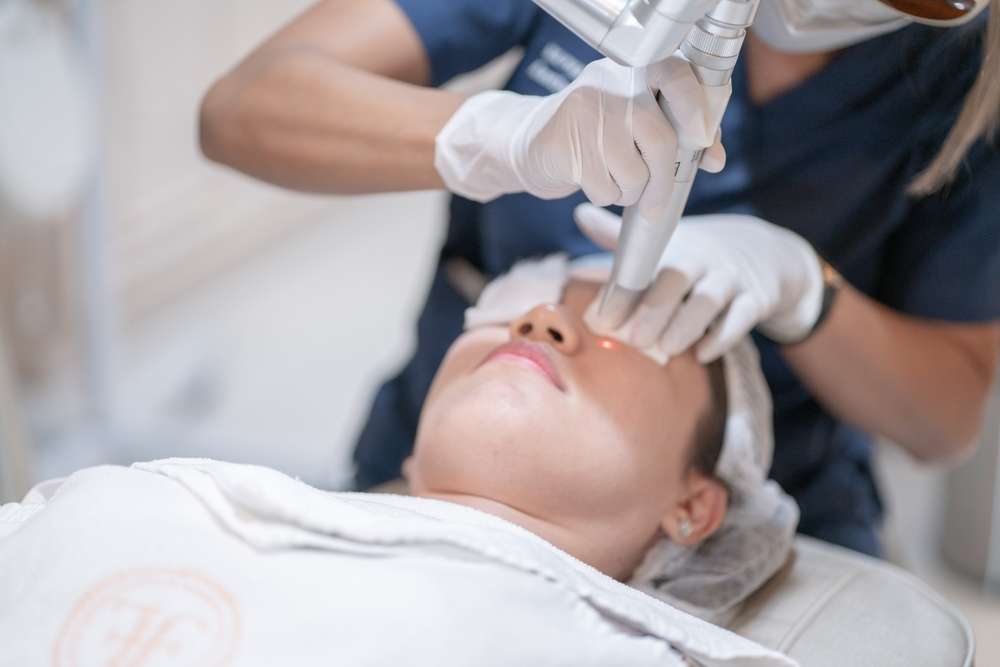Revive Your Skin: Laser Rejuvenation for Youthful Glow
Explore how laser skin rejuvenation can refresh your complexion by addressing fine lines, sun damage, uneven tone, enlarged pores and acne scars. This non-surgical treatment uses targeted light energy to stimulate collagen, improve texture and reduce pigmentation—learn what to expect, risks, and how to choose the right clinic for safe, effective results.

Laser treatments have become a mainstay for people seeking to refresh their skin without surgery. By delivering concentrated light or energy into the skin, laser skin rejuvenation encourages collagen production, smooths texture, and corrects pigmentation issues. Below is a clear guide to what these treatments can do, the technology involved, what a session is like, potential side effects, and tips for selecting a qualified clinic.
Common skin issues lasers can improve
Laser rejuvenation is adaptable, making it effective for several concerns at once. Typical problems that respond well include:
-
Fine lines and wrinkles — Lasers stimulate collagen and elastin, which help plump and firm aging skin.
-
Sun damage and age spots — Targeted light breaks up pigment and fosters clearer, more even tone.
-
Uneven skin tone and texture — Treatments reduce roughness and improve overall smoothness.
-
Acne scars and other scarring — Certain lasers remodel scar tissue and promote healthier skin regeneration.
-
Enlarged pores — By tightening skin and remodeling collagen, pores may appear smaller.
-
Redness and visible blood vessels — Some devices target vascular issues to reduce flushing and broken capillaries.
Effectiveness varies by the specific condition, skin type, and device used, so a tailored consultation is important.
Types of lasers and light-based devices
Different technologies offer distinct advantages depending on goals and downtime tolerance:
-
Ablative lasers — These remove the epidermis and heat deeper layers, producing significant tightening and resurfacing. Results can be dramatic but downtime and recovery are longer.
-
Non-ablative lasers — These heat the deeper dermis without breaking the surface, promoting collagen over time. They are less invasive, with shorter recovery, though multiple sessions may be needed.
-
Fractional lasers — Instead of treating the entire surface, fractional devices create micro-injury zones surrounded by untreated tissue. This allows faster healing while still delivering strong results.
-
IPL (intense pulsed light) — Although not a true laser, IPL uses broad-spectrum light to treat pigmentation, redness, and sun damage and is often grouped with laser therapies.
Choosing the right device depends on skin type, concerns, and the balance you want between results and downtime.
What happens during a treatment session?
A typical visit begins with cleansing and a review of your medical and skincare history. A topical anesthetic may be applied for comfort, especially with more aggressive ablative or fractional procedures. The practitioner moves the device across the treatment area, delivering pulses of energy. Sessions commonly take 30 to 60 minutes depending on the area and technology.
During treatment you may feel a warming or prickling sensation; many patients tolerate this well with topical numbing. Immediately afterward the skin often looks reddened and may feel sunburned. Lighter therapies require minimal recovery, while deeper resurfacing can involve peeling and several days to weeks of downtime.
Your clinician will give personalized aftercare guidance including cleansing, sun protection, and products to aid healing.
Potential side effects and safety considerations
When performed by an experienced provider, laser rejuvenation is generally safe. Possible effects include:
- Redness and swelling that usually resolve within days
- Temporary lightening or darkening of the skin (hypo- or hyperpigmentation)
- Small risk of scarring with aggressive treatments
- Infection if aftercare instructions are not followed
- Rare burns from incorrect device settings
To reduce risks, choose a reputable clinic, disclose medications and medical history, and follow pre- and post-treatment instructions carefully.
Choosing the right clinic and practitioner
Selecting a qualified provider is essential for safety and good outcomes. Consider these factors:
- Credentials and specific experience with the device you will receive
- Range of laser technologies available and rationale for recommended treatment
- Before-and-after photos of real patients with similar concerns
- Patient reviews and word-of-mouth referrals
- Clean, professional environment and clear consultation process
- Transparent discussion of risks, benefits, expected results, and cost
A thorough consultation should leave you with a customized plan and realistic expectations.
| Treatment type | Typical sessions | Estimated downtime | Typical cost range |
|---|---|---|---|
| IPL / light-based | 3-6 sessions | Minimal to 3 days | $200 - $600 per session |
| Non-ablative laser | 3-5 sessions | 1-7 days | $400 - $1,200 per session |
| Fractional laser | 1-3 sessions | 3-10 days | $800 - $2,500 per session |
| Ablative laser | 1 session (sometimes repeat) | 7-21+ days | $1,500 - $5,000+ |
Cost disclaimer: Prices are approximate and vary by clinic, location, and individual treatment needs. Consult your provider for exact pricing.
Aftercare and expectations for results
Improvements are often gradual as collagen rebuilds; non-ablative treatments may show incremental gains over weeks or months, while ablative procedures can produce more immediate and pronounced changes once healing completes. Protecting treated skin from sun exposure is critical to maintain results and reduce complications. Your provider may recommend a gentle skincare routine, hydrating products, and sunscreen to support recovery and longevity of benefits.
Laser skin rejuvenation can deliver meaningful improvement for a wide range of aesthetic concerns. The key to a successful outcome is selecting the appropriate technology for your skin and working with an experienced clinician who communicates clearly about risks, recovery, and realistic results. If you are considering laser treatment, arrange a consultation to discuss options tailored to your skin type and goals.
This article is for informational purposes only and should not be considered medical advice. Please consult a qualified healthcare professional for personalized guidance and treatment.






